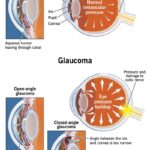The Diagnostic and Statistical Manual of Mental Disorders, Fifth Edition, Text Revision (DSM-5-TR) serves as the foundational resource for mental health professionals in the United States and globally. It is the standard classification of mental disorders, offering a common language and criteria to diagnose these conditions. Understanding what a DSM-5 diagnosis entails is crucial for anyone involved in healthcare, and increasingly relevant in diverse fields where understanding human behavior is important.
A DSM-5 diagnosis is essentially the process of identifying a specific mental disorder in an individual based on a comprehensive set of criteria outlined in the DSM-5-TR. This manual, developed through rigorous scientific research and expert consensus, provides clinicians and researchers with:
- Specific diagnostic criteria: For each recognized mental disorder, the DSM-5-TR lists precise criteria that must be met for a diagnosis to be assigned. These criteria are based on clusters of symptoms, duration, and the impact of these symptoms on an individual’s functioning. For example, diagnosing Major Depressive Disorder requires the presence of at least five out of nine specific symptoms for at least a two-week period, causing significant distress or impairment in social, occupational, or other important areas of functioning.
- Descriptive text: Beyond the criteria sets, the DSM-5-TR offers detailed descriptions of each disorder. This includes associated features, prevalence, development and course, risk and prognostic factors, culture-related diagnostic markers, gender-related diagnostic markers, and functional consequences. This descriptive text provides a deeper understanding of the nuances of each disorder, aiding clinicians in differential diagnosis and comprehensive patient care.
- A common language: The DSM-5-TR ensures that mental health professionals are speaking the same language when discussing and diagnosing mental disorders. This standardized nomenclature is vital for effective communication among clinicians, researchers, and policymakers worldwide. It facilitates consistent diagnosis, treatment planning, and research efforts across different settings and populations.
- ICD-10-CM Codes: The DSM-5-TR is linked to the International Classification of Diseases, Tenth Revision, Clinical Modification (ICD-10-CM), providing specific symptom codes for each diagnosis, including codes for suicidal behavior and non-suicidal self-injury. These codes are essential for administrative purposes, including insurance claims and public health statistics. The latest revision includes updates to these codes, ensuring alignment with current clinical practice.
The DSM-5-TR is not static; it is a living document that evolves with ongoing research and clinical experience. The latest version, DSM-5-TR, includes several significant updates:
- New Diagnosis: Prolonged Grief Disorder: Recognizing the distinct nature of prolonged grief, the DSM-5-TR introduces prolonged grief disorder as a new diagnosis. This acknowledges the needs of individuals who experience persistent and debilitating grief following bereavement.
- Clarifying Modifications: Over 70 disorders have undergone clarifying modifications to their criteria sets. These refinements are based on the latest scientific literature and aim to improve the precision and clinical utility of the diagnostic criteria.
- Emphasis on Context: Reflecting a growing understanding of the impact of social determinants of health, the DSM-5-TR incorporates a comprehensive review of the impact of racism and discrimination on the diagnosis and manifestations of mental disorders. This highlights the importance of considering cultural and social contexts in diagnosis and treatment.
In conclusion, a DSM-5 diagnosis is more than just labeling a condition. It is a rigorous process based on standardized criteria and comprehensive descriptions, designed to improve the accuracy and consistency of diagnosing mental disorders. The DSM-5-TR is an essential tool for mental health professionals, researchers, and anyone seeking to understand the complexities of mental health conditions. Its ongoing updates ensure it remains relevant and reflects the latest advancements in the field, ultimately aiming to improve diagnosis, treatment, and the lives of individuals affected by mental disorders.
